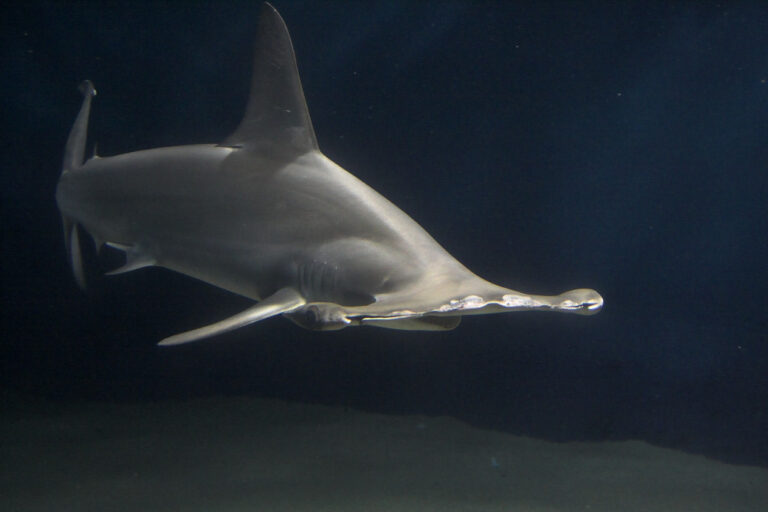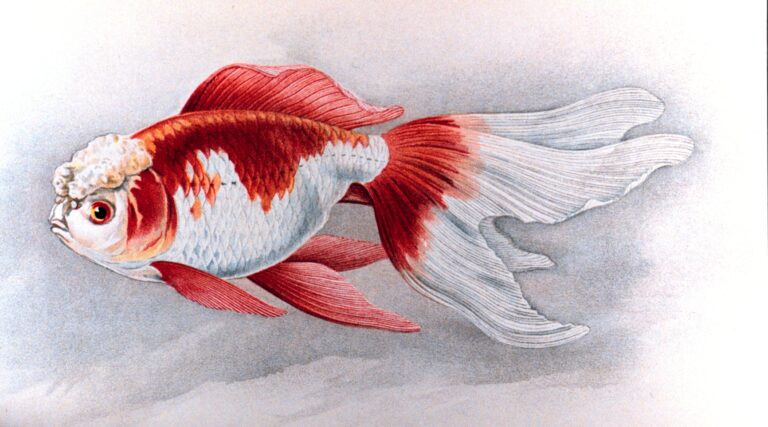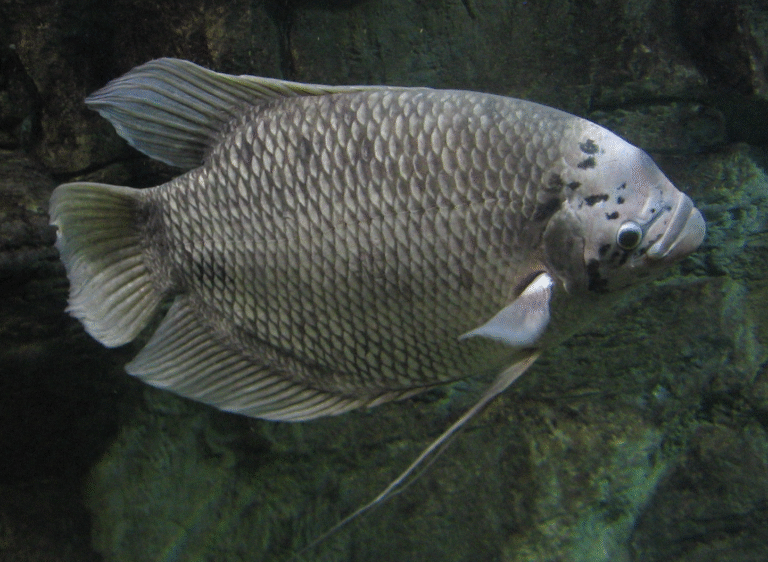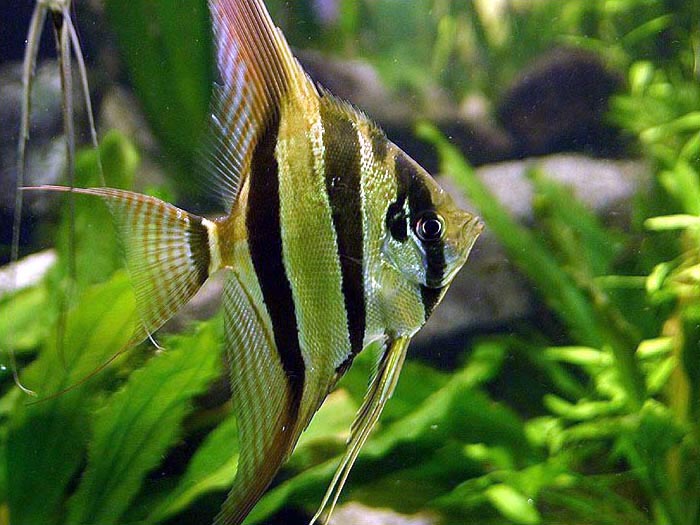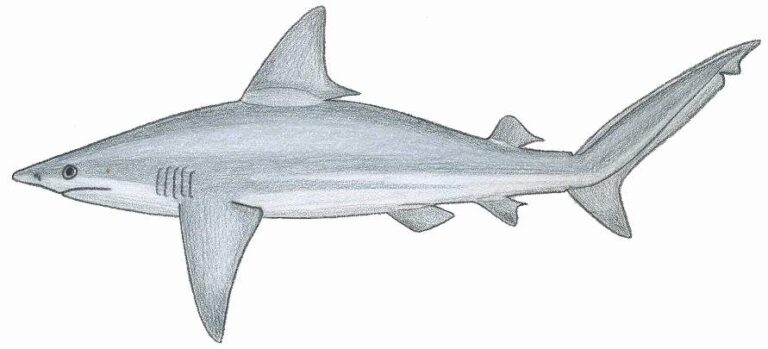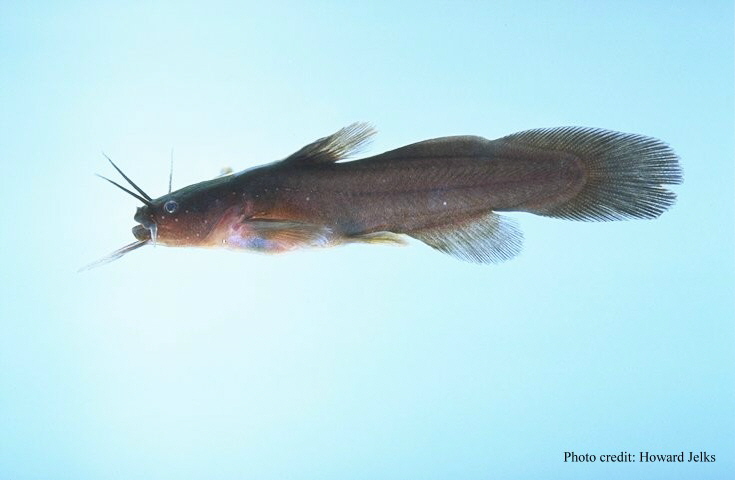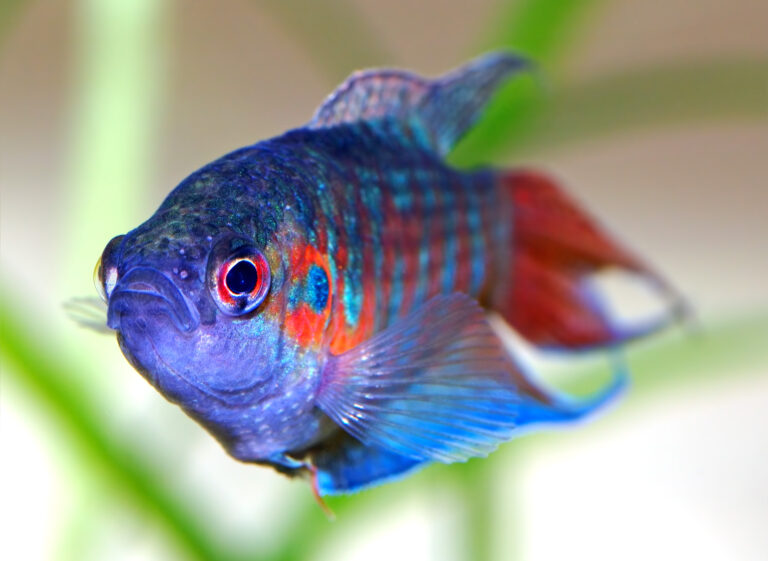Pacific Northwest Salmon Fishing: Guide to Puget Sound and Columbia River
By Adam Hawthorne | Last Modified: June 4, 2025
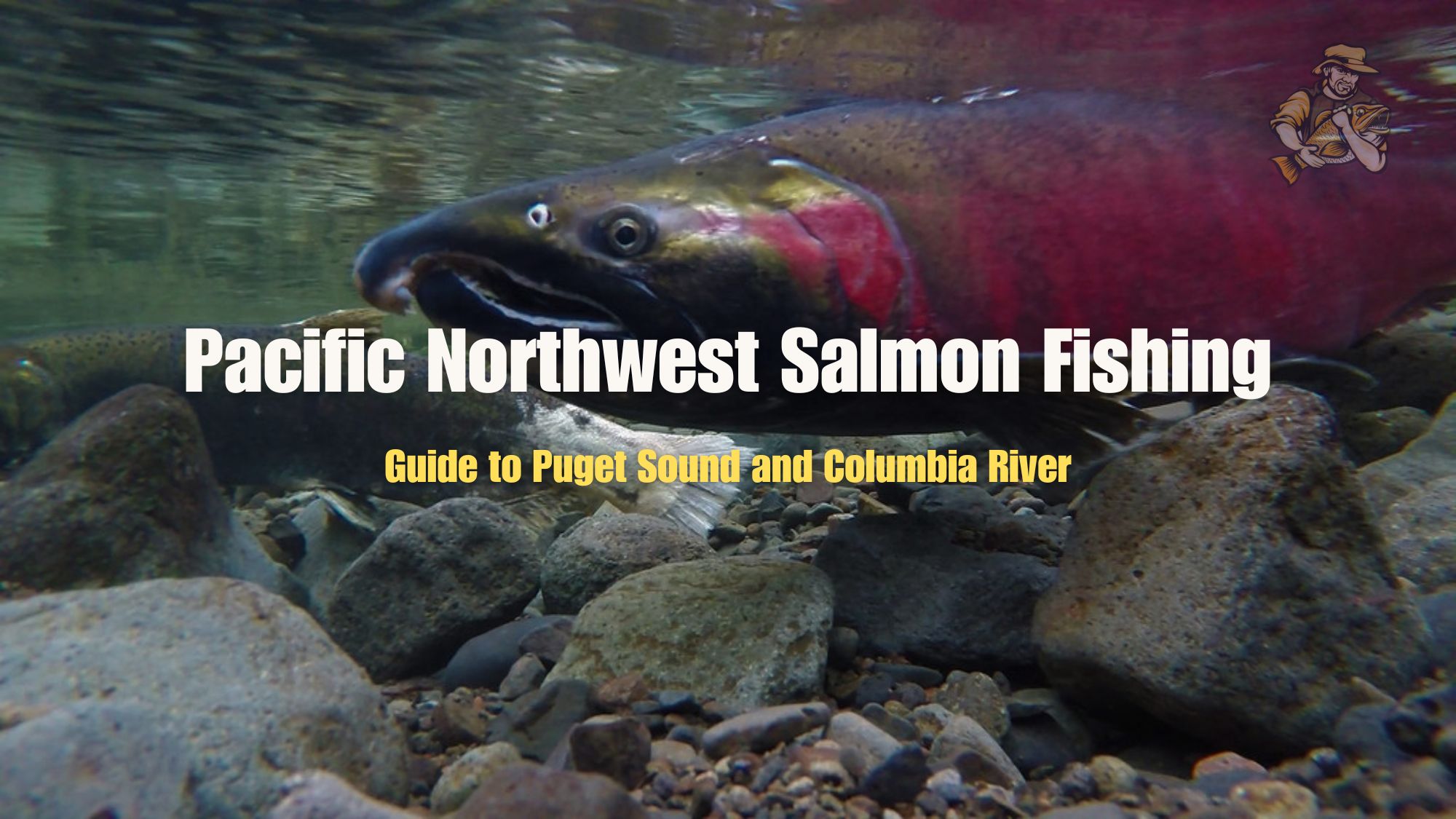
There’s something almost magical about the way Pacific Northwest salmon fight on the end of your line. I still remember my first Chinook – a 26-pounder caught near Neah Bay that nearly yanked my rod into the sound. That was back in ’98, and I’ve been chasing that same thrill ever since across the waters of Puget Sound and the mighty Columbia.
Pacific Northwest salmon fishing isn’t just a hobby – for many of us, it’s an obsession that borders on religion. The complex migrations, the seasonal patterns, and the sheer power of these fish create a fishing experience unlike anything else in freshwater or salt.
Over my three decades of fishing these waters (and making plenty of expensive mistakes), I’ve learned that success with Pacific Northwest salmon requires understanding their behaviors, habitats, and the specific techniques that trigger strikes. Let me share what works – and what definitely doesn’t.
Pacific Northwest Salmon Species: Know Your Quarry
Before heading out on these waters, you need to know exactly what you’re targeting. The Pacific Northwest hosts five main salmon species, each with unique behaviors and fishing approaches.
King (Chinook) Salmon: The Trophy Pursuit
Chinook salmon are what dreams are made of – the largest of all Pacific salmon species and the ultimate prize for most anglers. They’re called “kings” for good reason. These beasts can reach 40+ pounds in the Pacific Northwest, though the average catch typically runs 15-25 pounds.
Kings tend to run deeper than other salmon species. I’ve had my best luck targeting them between 80-120 feet in Puget Sound, particularly during early morning tide changes. They’re structure-oriented fish, often hugging underwater ledges and drop-offs.
The Washington Department of Fish and Wildlife Chinook regulations change almost yearly, so always check before heading out. Last season, my buddy Dave got hit with a $300 fine for keeping a wild Chinook with an intact adipose fin during a selective fishery. Don’t make the same mistake.
My go-to Chinook setup is a bit heavier than what most guides recommend. I run 25-pound test with a flasher and hoochie combo in green/chartreuse. While blue is supposedly the “best” color according to most tackle shops, I’ve consistently outfished my friends with the greener patterns, especially in slightly murky water conditions.
Coho (Silver) Salmon: The Aggressive Fighters
If kings are the heavyweights, coho are the middleweights with a nasty attitude. These 6-12 pound scrappers fight well above their weight class and often put on aerial displays that’ll leave you grinning for days.
Coho typically run shallower than kings, usually in the top 60 feet of the water column. I’ve had exceptional coho days trolling just 15-20 feet down near Jefferson Head when the tide was flowing out of Puget Sound. These fish are suckers for anything with flash and vibration.
One September morning in 2021, my son Tommy and I limited out on coho in just under an hour near Point No Point. We were using small pink Coyote spoons behind 11-inch flashers – nothing fancy, just the basics done right with the right presentation at the right depth.
The coho regulations are generally more liberal than for kings, but they vary significantly between river systems. The WDFW coho season guidelines should be required reading before planning your trip.
Sockeye (Red) Salmon: The Selective Feeders
Sockeye might be smaller (typically 4-8 pounds), but what they lack in size they make up for in both eating quality and the challenge they present. These are, hands down, the best-tasting salmon in the Pacific Northwest. Their flesh is a deep red-orange that’s absolutely stunning on the plate.
Catching sockeye is a different game altogether. Since they primarily feed on zooplankton, they’re notoriously difficult to entice with traditional lures. In river systems like the Columbia, small, brightly colored flies work best. And I mean small – like size 8 or smaller hooks with minimal dressing.
I learned this lesson the hard way. For three straight seasons, I struggled to catch sockeye on the Columbia using standard salmon setups. Then I met an old-timer named Frank at the boat launch who showed me his ultralight approach with small red flies. It completely changed my success rate with these picky eaters.
The Baker Lake sockeye fishery near Mount Baker is another exceptional opportunity, though it’s heavily regulated and only open for short windows. Last year, I managed to catch my limit there using a pink/orange Flash Fly with a small dodger ahead of it.
Pink Salmon: The Every-Other-Year Opportunity
Pink salmon have an unusual two-year life cycle, meaning they’re primarily available in Puget Sound during odd-numbered years. They’re smaller (3-5 pounds typically) but can be incredibly abundant when they’re running.
During the 2023 pink run, the fishing near Mukilteo was nothing short of ridiculous. Schools of thousands of fish were visible from the surface, and it was possibly the easiest limit I’ve ever caught. Small pink Buzz Bombs and Dick Nite spoons were absolutely deadly.
Don’t let their size fool you – pinks can be scrappy fighters on light tackle, and they’re perfect for introducing kids to salmon fishing. Their abundance and willingness to strike makes them ideal for building confidence with newer anglers.
The one downside? Their eating quality declines rapidly once they enter fresh water. For table fare, target them in saltwater, and eat them fresh rather than freezing.
Chum (Dog) Salmon: The Underrated Fighter
Chum salmon get a bad rap among some “serious” salmon anglers, but that’s a mistake. While they’re not generally considered great table fare (though fresh-caught ocean chums can be excellent), they provide some of the most aggressive fights pound-for-pound.
These 7-15 pound bruisers are fall runners in most Puget Sound systems. The Hood Canal chum fishery is world-famous, with tens of thousands of fish returning each year. I’ve had 10-fish days there that left my arms feeling like rubber.
Chums love chartreuse, and I mean LOVE it. My most productive rig has been a chartreuse Vibrax spinner with a splash of hot pink. They hit it like they’re trying to kill it, not eat it. It’s some of the most exciting visual fishing you can experience, as they’ll often strike right at the surface with a violent boil.
Puget Sound Salmon Fishing: Marine Area Tactics
Puget Sound offers some of the most diverse salmon fishing opportunities in the Pacific Northwest, but success requires understanding its complex geography and regulations.
Marine Area 9: Admiralty Inlet Gold Mine
Marine Area 9 has consistently produced some of my best king salmon catches over the past decade. The shipping lanes near Point No Point create underwater structures that concentrate baitfish and, consequently, hungry salmon.
During summer king season, I’ve had exceptional results mooching with herring near the shipping lane edges. The key is finding the precise depth where suspended baitfish are holding. This can change daily, but generally, 80-120 feet has been the sweet spot during morning hours.
One technique that’s worked surprisingly well is using a downrigger to take a herring-baited rig down, then “bouncing” it by raising and lowering the downrigger ball about 5-10 feet every few minutes. This erratic action seems to trigger reaction strikes from otherwise reluctant kings.
The winter blackmouth (resident Chinook) fishery in Area 9 can be excellent as well, though it requires a different approach. These fish typically hold deeper and respond better to artificial presentations. Green/glow squids behind a flasher have been my most consistent producers during winter months.
Marine Area 10: Seattle’s Backyard Bonanza
It’s hard to believe that quality salmon fishing exists literally within sight of Seattle’s skyline, but Area 10 proves it’s possible. This area shines for coho in late summer and early fall, particularly around Jefferson Head and West Point.
The shipping lanes here also create excellent structure, but unlike Area 9, I’ve found that Area 10 fish often suspend higher in the water column. My downriggers typically set at 30-60 feet for coho, depending on the time of day and water clarity.
One spot that doesn’t get nearly enough attention is the Kingston ferry lanes during tide changes. The ferry wash creates temporary upwellings that attract baitfish, and predators follow. I’ve had multiple 3-fish mornings trolling the edges of these lanes about 20 minutes after a ferry passes.
The morning I discovered this pattern was completely accidental. I was trying to cross the ferry lane to reach what I thought would be better water, got delayed by an incoming ferry, and decided to make a quick pass while waiting. Three coho strikes in 10 minutes completely changed my perspective on this area.
Marine Area 11: Tacoma’s Hidden Gem
Point Defiance is legendary among salmon anglers, and for good reason. The riptides and currents here create perfect hunting grounds for salmon, especially kings.
Clay Banks near Point Defiance has produced more 20+ pound kings for me than any other spot in Puget Sound. The technique here is specific though – mooching with cut-plug herring right along the deep ledge that runs parallel to the shoreline. The locals call it “the elevator” because the depth drops from 60 to 140 feet almost vertically.
Last July, my fishing buddy Mike (who’s been guiding these waters for 23 years) showed me a slight variation on the traditional mooching technique. Instead of the standard cut-plug, he does what he calls a “Caribbean cut” – essentially cutting the herring at a more extreme angle to create an even more erratic action. The difference was remarkable – we outfished nearby boats 3-to-1 that morning.
For coho in Area 11, I’ve had excellent results casting Buzz Bombs from shore near Dash Point during incoming tides. The slightly deeper “color break” about 50 yards offshore tends to hold schools of coho moving through with the tide.
Marine Area 13: South Sound Secrets
The waters of South Puget Sound get less pressure than northern areas but can produce exceptional catches, particularly for blackmouth during winter months.
The Nisqually Flats area features relatively shallow water with abundant eel grass beds that attract baitfish and salmon. Unlike the deeper water techniques used elsewhere, light tackle and smaller presentations excel here.
I’ve found that 1/4 to 1/2 ounce Buzz Bombs in orange/gold consistently outperform more elaborate setups in this area. The key is a slow retrieve with occasional jerks to imitate an injured baitfish.
Another overlooked area is Boston Harbor near Olympia, particularly for early-season coho. The relatively warmer water temperatures here can draw fish earlier than other areas of the Sound.
Columbia River Salmon: River System Strategy
The mighty Columbia presents a completely different fishing experience than Puget Sound, with distinct strategies required for success.
Buoy 10: The Legendary Fishery
The area near the Columbia River mouth known as Buoy 10 offers perhaps the most famous salmon fishery in the Pacific Northwest. This is big water fishing with potentially huge rewards.
Success at Buoy 10 is all about understanding the tides and how they affect fish movement. I learned this lesson painfully over three consecutive unsuccessful trips until a crusty old boat captain named Ray set me straight.
“You’re fishing the wrong part of the tide,” he told me bluntly at the fuel dock. “These fish move with the current, not against it. You want to be dropping your gear during the last two hours of the incoming tide, not fighting the outgoing.”
Following his advice transformed my success rate. The incoming tide concentrates baitfish and creates a “highway” that salmon follow right into your presentation.
The standard approach here involves trolling with bait or spinners behind a flasher. However, I’ve found that the most productive setup depends heavily on water clarity. In clearer conditions, herring or anchovies produce better. In murkier water after rain events, large spinners in bright colors (especially red/white combinations) have outperformed bait.
Depth control is critical at Buoy 10. Fish typically hold between 15-40 feet depending on tides and water conditions. When I first started fishing here, I made the rookie mistake of running my gear too deep, completely missing the active fish zone.
Astoria to Portland: The Mid-River Approach
As salmon move upriver, their behavior and preferred presentations change. Between Astoria and Portland, the river narrows and deepens in many areas, creating excellent holding water for migrating fish.
Trolling with spinners behind flashers remains effective, but I’ve found that adding scent to lures becomes increasingly important as fish transition from their ocean feeding phase. Adding sardine oil to spinner blades has noticeably increased my strike rate in these areas.
The trick that completely changed my fishing success between Rainier and Portland was actually counter-intuitive. Most boats troll with the current for speed efficiency, but I’ve consistently found that trolling against the current (much slower but more controlled) produces better hookup rates. Yes, it burns more fuel, but the results speak for themselves.
One specific location that deserves special attention is the deep hole near St. Helens. This 60+ foot depression in the river bottom concentrates fish during hot weather periods. I’ve had 100+ degree days in August where we limited out by 9am trolling the edges of this hole while other anglers struggled in the shallower water nearby.
Above Bonneville: Tributary Tactics
Above Bonneville Dam, the Columbia changes character again, as do the tactics required for consistent success. Here, many anglers focus on “drifting” techniques rather than trolling.
Backtrolling with plugs like Kwikfish or Flatfish wraps becomes extremely effective. I wrap my plugs with sardine fillets secured with thread – a time-consuming process but one that dramatically improves results. My fishing journal shows a nearly 40% increase in strikes since adopting this approach five years ago.
The Columbia’s tributaries above Bonneville also offer excellent opportunities. The Wind River and Drano Lake, in particular, can provide exceptional fishing when timed correctly with fish movements.
At Drano Lake, I’ve found that jigging techniques often outperform trolling, especially during midday hours when fish become less active. A 3/8 oz jig in white or chartreuse worked very slowly along the bottom has produced some of my best catches there.
Seasonal Patterns for Pacific Northwest Salmon
Understanding when different salmon species run is crucial for planning successful fishing trips.
Spring: The Early Kings
Spring Chinook (often called “springers”) are widely considered the best-eating salmon in the Pacific Northwest. These fish are typically bound for the upper Columbia and its tributaries.
The lower Columbia springer run typically begins in March and continues through May. These fish are notoriously difficult to catch, with success rates often below 10% even for experienced anglers. Their elusive nature makes them all the more rewarding when you do connect.
I’ve found that springer fishing requires a slower presentation than fall kings prefer. My trolling speed rarely exceeds 1.5 mph, and I often go even slower. Herring or anchovy cut-plugs in a tight spin have been my most productive baits.
The Willamette River also gets a solid run of springers, though the water is typically murkier than the main Columbia. In these conditions, larger spinners with prominent flash components consistently outperform bait presentations.
Summer: Mixed Bag Opportunities
By June and July, summer Chinook (nicknamed “June hogs” for their size) begin entering the Columbia, while sockeye runs peak in late June through July. This creates a mixed-bag opportunity in many areas.
In Puget Sound, resident kings (blackmouth) provide year-round opportunities in select areas, though regulations vary significantly by marine area. The currentPuget Sound salmon regulations should always be your first stop when planning summer trips.
Summer also brings the first of the ocean coho into Puget Sound, typically arriving in Marine Areas 9 and 10 by late July or early August.
Some of my most memorable summer days have come trolling the “bubble” near Point No Point, where incoming tide creates a visible current line that often holds feeding salmon. Small silver or white squids run behind a flasher at 30-50 feet have been deadly on these summer coho.
Fall: Peak Season Madness
September through October brings the largest concentrations of salmon into Pacific Northwest waters. Fall kings, coho, and eventually chum create a multispecies bonanza.
In Puget Sound, coho fishing peaks in September, with fish averaging 8-12 pounds and full of fight. These fish respond well to faster trolling speeds (2.5-3.5 mph) and flashier presentations.
My most productive fall coho setup has been a Simple Green (yes, like the cleaner) colored spoon behind a purple/chrome flasher. I stumbled on this bizarre color combination accidentally when I ran out of my “good” spoons one day and had to use what was left in my box. It outfished everything else on the boat, and I’ve been a convert ever since.
The fall Chinook runs in the Columbia typically peak in September, with fish averaging 15-25 pounds. These fish respond well to larger presentations – 5″ plugs or spinners with substantial profiles that push water.
Chum salmon arrive in Puget Sound tributaries by October and November, with Hood Canal streams receiving the largest concentrations. The fishing can be almost ridiculous when timed right, with aggressive fish readily striking bright lures.
Winter: The Dedicated Angler’s Season
Winter brings challenging conditions but rewards the dedicated with quality opportunities for blackmouth (resident Chinook) in Puget Sound.
Marine Areas 10 and 11 often provide the most consistent winter fisheries, though regulations can be restrictive. These winter fish typically run smaller (6-12 pounds) but are excellent table fare.
Winter blackmouth fishing requires a slower presentation in deeper water, typically 80-140 feet. I’ve found that glow-in-the-dark spoons or squids can make a significant difference during the darker winter days, especially during low-light morning hours.
The depth finder becomes your most valuable tool during winter months. Look for baitballs suspended over structure, as blackmouth will often hold directly beneath them.
Essential Gear for Pacific Northwest Salmon
The Pacific Northwest’s diverse salmon fisheries demand specialized gear for different situations.
Rods & Reels: Horses for Courses
For Puget Sound trolling, medium-heavy action rods in the 8’6″ to 10′ range paired with level-wind reels are standard equipment. Line counter reels allow precise depth control, essential when fish are holding at specific depths.
I personally run Shimano Tekota 600LC reels on 9′ medium-heavy Lamiglas rods for most of my Puget Sound trolling. While there are certainly more expensive options available, this combination offers the right balance of performance and value.
For Columbia River trolling, especially in areas with stronger currents, heavier setups become necessary. I’ve upgraded to Tekota 800 series reels for these waters, as the additional line capacity and drag power provide insurance when hooking into larger kings.
For jigging or casting applications, I switch to a 7’6″ medium action rod with a high-quality spinning reel. The Daiwa BG series has proven surprisingly durable for its price point – I’ve had mine for six seasons of hard use without issues.
Terminal Tackle: The Business End
Flashers are essential for most Pacific Northwest trolling applications. While there are countless options available, I’ve found that Pro-Troll 11″ flashers in UV finishes consistently outperform more expensive alternatives in most conditions.
For actual lures, my boat box contains a selection of:
- Hoochies (plastic squid skirts) in white, green, purple, and pink
- Coyote spoons in various sizes and colors (1.5″ to 3.5″)
- Coho Killers for faster trolling applications
- Cut-plug herring rigs for kings
- Various plugs like Luhr Jensen’s Kwikfish and Yakima Bait’s FlatFish
The most overlooked terminal tackle item might be the humble banana weight. While downriggers are standard equipment for most boats, banana weights allow precise depth control when casting or mooching. I carry them in 1-4 oz sizes and switch based on current and desired depth.
Electronics: Game Changers
A quality fish finder with temperature sensing capability is no longer optional for serious salmon fishing in the Pacific Northwest. Being able to locate baitfish schools and identify the thermocline can reduce searching time dramatically.
After years of using budget electronics, I finally invested in a Garmin ECHOMAP UHD 94sv three seasons ago. The difference has been remarkable – not just in finding fish, but in understanding underwater structure that holds fish consistently across different conditions.
One unexpected benefit has been the ability to save waypoints of debris or deadheads in the Columbia, which can be boat-killers in low light conditions. That feature alone has saved me from potential disasters at least twice.
Common Pacific Northwest Salmon Fishing Mistakes
Over the years, I’ve made just about every mistake possible when pursuing Pacific Northwest salmon. Learn from my errors and save yourself the frustration.
Misreading the Tides
Tidal movement influences salmon behavior more than any other factor in marine areas. I spent my first two seasons fishing Puget Sound with minimal attention to tide charts, wondering why my success was so inconsistent.
The revelation came when an old-timer at the Mukilteo launch ramp asked what tide I was targeting. When I admitted I hadn’t checked, he shook his head and said, “Son, you’re just going for an expensive boat ride then.”
He explained that in most Puget Sound areas, the last two hours of an incoming tide combined with the first hour of the high slack produces the most consistent action. This isn’t universal – some areas fish better on outgoing tides – but understanding these patterns is crucial.
I now plan my trips specifically around tide movements rather than convenient launch times. The difference has been dramatic, particularly for king salmon fishing.
Ignoring Water Temperature
Salmon have preferred temperature ranges, with kings typically favoring 52-58°F water and coho slightly warmer at 54-60°F. Finding these temperature bands can concentrate your effort in productive zones.
During summer months, a thermocline often develops in Puget Sound, creating a distinct temperature break that concentrates baitfish and predators. My fish finder’s temperature sensor helps locate these productive zones.
One August day near Blake Island, we found a clear thermocline at 45 feet, with surface temperatures near 65°F and 53°F below the break. We set our downriggers to run just below this break and limited out on coho in under two hours while boats fishing the same area at different depths struggled.
Using the Wrong Presentation Speed
Each salmon species has preferred presentation speeds, and getting this wrong means unproductive days on the water.
As a general rule:
- Kings (Chinook): 1.5-2.5 mph
- Coho (Silver): 2.5-3.5 mph
- Sockeye: 1.0-1.8 mph
- Pink: 2.0-3.0 mph
- Chum: 2.5-4.0 mph
These are just starting points – factors like water temperature, current, and time of year can all influence optimal speeds. I use my GPS to maintain precise trolling speeds and log successful parameters in a fishing journal for future reference.
Overlooking Local Knowledge
The Pacific Northwest’s salmon fisheries are complex and change year to year. Local knowledge can shortcut the learning curve dramatically.
I make it a point to visit local tackle shops before fishing unfamiliar waters. A $20 tackle purchase usually comes with invaluable local information that online research can’t provide.
Case in point: Last September, I stopped at a small tackle shop near Sekiu before heading out. The owner mentioned that the previous day’s bite had been exclusively on small green spoons, completely contrary to the standard early fall patterns. I bought a couple on his recommendation, and they outproduced my “proven” setups by a margin of 8 to 1.
Pacific Northwest Salmon Fishing Regulations
The regulatory landscape for Pacific Northwest salmon fishing is complex and changes annually based on run forecasts and conservation needs.
Washington State Marine Area Regulations
Puget Sound is divided into distinct marine areas (numbered 5-13), each with specific seasons, species restrictions, and catch limits. These regulations can change not just annually, but mid-season if runs are stronger or weaker than projected.
The Washington Department of Fish and Wildlife website should be your first stop before any fishing trip, regardless of how recently you’ve checked regulations. I’ve seen limits and seasons change with less than 48 hours notice when in-season assessments indicated concerns.
Marine Area 10 (Seattle/Bremerton) provides a perfect example of this complexity. In recent years, it’s had different opening dates for coho versus Chinook, mid-season closures for specific species, and varying limits for hatchery versus wild fish.
The most confusing part for many anglers is understanding the selective fishery restrictions. In most marine areas, only hatchery fish (identified by a clipped adipose fin) may be retained, while wild fish must be released unharmed.
Columbia River Regulations
The Columbia presents additional complexity, as regulations often vary between Washington and Oregon, and different rules may apply above and below Bonneville Dam. Additionally, tribal fisheries have different regulations that apply to tribal members.
The Columbia River Compact sets the overall framework for Columbia fishing, but in-season changes are common. A section that’s open one week may close suddenly if catch rates or encounters with protected stocks exceed expectations.
One particular source of confusion is the Buoy 10 fishery, which has its own special regulations distinct from the rest of the lower Columbia. These often include earlier closures and more restrictive limits designed to protect upriver-bound fish.
Emergency Rules and Closures
Perhaps the most frustrating aspect of Pacific Northwest salmon regulations is the emergency rule changes that can occur with minimal notice. These changes typically happen through emergency action when in-season assessments suggest conservation concerns.
I’ve experienced the disappointment of driving three hours to a planned fishing location only to discover it had closed via emergency order the previous evening. I now make it a ritual to check the emergency rule page before any fishing trip, regardless of how recently I’ve verified regulations.
Some areas now offer text or email alert services for emergency regulations. These have been game-changers for planning purposes and are well worth signing up for if you fish regularly in the Pacific Northwest.
Pacific Northwest Salmon Fishing FAQ
What size boat do I need for Puget Sound salmon fishing?
For most Puget Sound areas, a boat of at least 18 feet is recommended for safety, particularly when fishing the larger marine areas like Area 9 where conditions can change rapidly. However, I’ve seen anglers successfully fish from boats as small as 14 feet by staying in protected areas and being extremely weather-conscious.
My first Puget Sound boat was a 17′ aluminum with a 50hp outboard. It served me well for years by being selective about weather conditions and staying within my comfort zone. Safety equipment becomes even more critical with smaller vessels – never scrimp on this.
When is the best time to fish for Pacific Northwest salmon?
The answer varies dramatically by species and location:
- Spring Chinook: April-May (Columbia River)
- Summer Chinook: June-July (Columbia River)
- Sockeye: Late June-July (Columbia tributaries)
- Pink Salmon: August-September of odd-numbered years (Puget Sound)
- Coho: August-October (peak in September for most areas)
- Fall Chinook: August-September (peak in mid-September)
- Chum: October-November (Hood Canal and Puget Sound tributaries)
- Winter Blackmouth: November-April (varies by marine area)
For all species, dawn and dusk typically provide the most productive fishing hours, with salmon often becoming less active during bright midday conditions, especially in clear water.
Do I need a guide for my first Pacific Northwest salmon fishing trip?
While not absolutely necessary, hiring a guide for your first outing offers tremendous value for novice salmon anglers. A good guide provides not just access to the right equipment and locations, but crucially, hands-on instruction in proper techniques.
When I first moved to Washington, I invested in three guided trips before purchasing my own boat and gear. Those guided experiences saved me thousands in trial-and-error equipment purchases and dramatically shortened my learning curve.
Look for guides with at least 10 years of experience who are willing to explain their techniques rather than just putting you on fish. The education is as valuable as the catch.
What’s the difference between trolling, mooching, and jigging for salmon?
These three techniques represent the primary methods for targeting Pacific Northwest salmon, each with specific applications:
Trolling involves pulling lures or bait through the water at controlled speeds, typically using downriggers to maintain specific depths. This is the most common technique in Puget Sound and the Columbia River, allowing you to cover water efficiently when searching for actively feeding fish.
Mooching is a more specialized technique involving drift-fishing with cut-plug herring. The boat drifts naturally with the current while anglers work their bait in a jigging motion. This technique excels for targeting king salmon, particularly in areas like Point Defiance or Possession Bar.
Jigging employs artificial lures worked vertically beneath the boat, particularly effective in confined areas like Drano Lake or when fish are holding in a small area. This technique requires more angler activity but can be devastating when fish are concentrated but not actively chasing moving baits.
How do regulations differ for wild versus hatchery salmon?
In most Pacific Northwest waters, regulations strongly favor the retention of hatchery-origin fish (identified by a clipped adipose fin) while protecting wild salmon. The specific rules vary by location and species, but generally:
Hatchery coho can typically be retained in most marine areas during open seasons, while wild coho retention is often restricted or prohibited entirely.
Chinook fishing includes a complex patchwork of rules, with some areas allowing retention of both wild and hatchery fish (typically with reduced overall limits), while others restrict harvest to hatchery fish only.
Wild steelhead (sea-run rainbow trout) are generally protected throughout Washington and Oregon waters, with retention limited exclusively to hatchery fish and even those opportunities becoming increasingly restricted.
The complexity of these regulations underscores the importance of checking current rules before each fishing trip.
Final Thoughts on Pacific Northwest Salmon Fishing
Pacific Northwest salmon fishing represents not just a recreational pursuit, but a connection to the region’s natural heritage and identity. These magnificent fish have sustained indigenous peoples for thousands of years and continue to captivate anglers with their beauty, power, and the challenge they present.
I’ve spent over three decades pursuing these fish across Puget Sound and the Columbia Basin, and each season still brings new lessons and surprises. The techniques that produced limits last year might prove completely ineffective this season as environmental conditions, bait patterns, and fishing pressure influence salmon behavior.
This constant evolution keeps Pacific Northwest salmon fishing perpetually challenging and rewarding. Success comes not just from having the right gear or knowing productive locations, but from developing a deeper understanding of how these fish respond to their environment and the ability to adapt your approach accordingly.
For newcomers to Pacific Northwest salmon fishing, my strongest recommendation is to invest time in learning before expecting consistent success. Hire a knowledgeable guide, join local fishing clubs, visit tackle shops, and spend time on the water observing before focusing solely on catching. The journey of becoming a competent salmon angler brings rewards far beyond just filling a fish box.
There’s something profoundly satisfying about watching your rod tip bounce with the distinctive pull of a Pacific Northwest salmon, knowing that the fish on the other end has traveled thousands of miles through the hostile open ocean to return to these waters. It creates a connection to something wild and ancient that becomes increasingly precious in our modern world.
Whether you’re casting from the banks of the Columbia, trolling the shipping lanes of Puget Sound, or drifting a tributary, Pacific Northwest salmon fishing offers experiences you’ll carry for a lifetime. The misty mornings, the sudden explosive strikes, and even the occasional frustrating skunk days all become part of a rich tapestry of memories that keep us coming back season after season.

Meet Adam Hawthorne
I’m a lifelong fishing enthusiast who’s spent years exploring rivers, lakes, and oceans with a rod in hand. At Fishing Titan, I share hands-on tips, honest gear reviews, and everything I’ve learned about fish and ocean life, so you can fish smarter and enjoy every cast.
Share:

Meet Adam Hawthorne
I’m a lifelong fishing enthusiast who’s spent years exploring rivers, lakes, and oceans with a rod in hand. At Fishing Titan, I share hands-on tips, honest gear reviews, and everything I’ve learned about fish and ocean life, so you can fish smarter and enjoy every cast.
Related Articles
-
Hammerhead Shark
The Hammerhead Shark represents one of the most distinctive and fascinating apex predators in marine ecosystems worldwide. These remarkable cartilaginous fish, scientifically classified under the…
-
Oranda Goldfish
The Oranda Goldfish (Carassius auratus) stands as one of the most distinctive and cherished varieties in the world of ornamental fishkeeping. Characterized by its prominent…
-
Giant Gourami
The Giant Gourami (Osphronemus goramy) represents one of the most remarkable freshwater fish species in Southeast Asia, distinguished by its impressive size, complex social behaviors,…
-
Angelfish
Angelfish represent one of the most recognizable and ecologically significant families of marine fish, encompassing over 85 species distributed across tropical and subtropical oceans worldwide….
Fish Species
-
Sandbar Shark
The Sandbar Shark (Carcharhinus plumbeus) stands as one of the most recognizable and ecologically significant members of the requiem shark family along temperate and tropical…
-
Tadpole Madtom
The Tadpole Madtom (Noturus gyrinus) represents one of North America’s smallest and most elusive catfish species, playing a crucial ecological role as both predator and…
-
Balloon Molly
The Balloon Molly (*Poecilia latipinna* var.) represents one of the most distinctive and popular ornamental fish varieties in the freshwater aquarium trade. This selectively bred…
-
Paradise Fish
The Paradise Fish stands as one of the most remarkable representatives of the labyrinth fish family, captivating aquarists and marine biologists alike with its vibrant…

